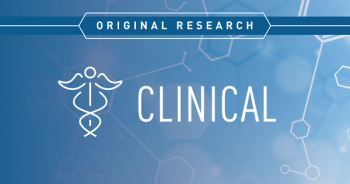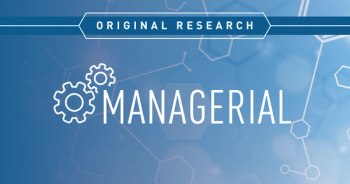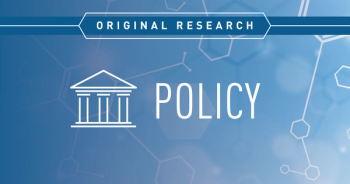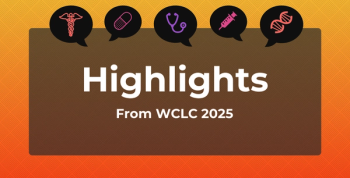
- July 2025
- Volume 31
- Issue Spec. No. 8
- Pages: SP528-SP530
COCOON Shows How Prophylactic AE Management Boosts QOL When Treating NSCLC With Amivantamab Plus Lazertinib

Key Takeaways
- The COCOON trial assessed prophylactic dermatologic regimens in NSCLC patients treated with amivantamab and lazertinib, showing reduced AEs and improved quality of life.
- Prophylactic treatment included oral antibiotics, topical clindamycin, chlorhexidine wash, and ceramide-based moisturizer, significantly reducing skin and nail AEs.
The COCOON trial reveals that prophylactic treatment reduces dermatological adverse events in NSCLC patients, enhancing their quality of life during amivantamab therapy.
Cancer treatments work only if patients take them, and adverse events (AEs) are a top reason patients may not stick with a therapy. Thus,
That’s why
The premise of COCOON is simple: If patients taking amivantamab are treated with a prophylactic regimen, will AEs be reduced? And will patients experience a better quality of life (QOL)?
The trial evaluated 138 patients newly diagnosed with advanced NSCLC being treated with amivantamab and lazertinib (Lazcluze; Johnson & Johnson), a third-generation tyrosine kinase inhibitor targeting EGFR.2
Patients’ QOL was assessed every 2 weeks with a validated patient-reported outcomes instrument. The Skindex-16 questionnaire assessed the impact of skin conditions on QOL using 3 subscales (functioning, emotional, symptoms) and an average score on their experience of overall symptoms.
Results showed that differences between the 2 arms were seen early on; after a follow-up of at least 12 weeks, patients receiving the prophylactic dermatologic regimen had less severe AEs, with less impact on their QOL.2 Results showed the following:
- At cycle 3 day 15 (about 10 weeks), patients on the COCOON regimen had a lower average Skindex score than those receiving SOC (P = .02).
- At cycle 3 day 15, there was a 3-fold difference for COCOON vs SOC arms in patients reporting no symptoms on the Patient Global Impression of Severity for skin rash (21% vs 7%; P = .04) and skin condition (23% vs 7%; P = .02).
- There were also improvements in patients reporting no symptoms for nail infections (27% for COCOON vs 16% SOC; P = .13).2
The American Journal of Managed Care (AJMC) spoke with the study’s senior author, Alexander I. Spira, MD, PhD, who is CEO and clinical director, NEXT Oncology Virginia, and chair of the Research Executive Committee for The US Oncology Network.
This interview has been lightly edited.
AJMC: Can you describe the scope of the problem that skin and nail reactions present in patients being treated with amivantamab?
Spira: No. 1, it is one of these things that really affects quality of life, and No. 2, it affects the ability of patients to stay on these drugs for a while. You can argue that one is more important than the other, but they’re both equally important. It’s a very simple idea: giving people prophylactic treatments vs waiting for [AEs] to happen.
AJMC: How does the mechanism of prophylactic treatment work?
Spira: With the EGFR-targeted monoclonal antibody amivantamab, we know all these drugs have skin toxicity because EGFR is associated in the skin. So, what occurs is dryness, serious acne-like infections, and scalp issues. So, it’s really very simple. It’s antibiotics. We know antibiotics help with acne, both topical and oral medications, as well as just keeping the skin moist and keeping it clean—that’s really all that it is. It’s very basic stuff, but you really do have to be rigorous about it.
AJMC: Some of the drugs are used to treat acne in teenagers, correct?
Spira: That’s right. They’re all drugs we use all the time.
AJMC: Your data presented are from a follow-up of 12 weeks. Would we expect this regimen to work beyond that time frame?
Spira: We believe that if you made a difference in 12 weeks, [that] would make a difference for the long term. We’re not looking for survival—we’re looking for improvement of the rash and fewer [AEs].… So it’s a very simple question, and the patients who did the prophylaxis did better.
AJMC: Is there anything specific in the findings that stands out?
Spira: Obviously, we want to improve rash, and that’s already been reported. Here, we are following up with patient-reported outcomes and looking at, “Do we improve quality of life?” And the answer is, yes, we do improve quality of life.
AJMC: As you know, a
Spira: It will make a big difference [in] time. No. 1, it will [reduce] time in the clinic, and No. 2, the infusions will go from many hours to minutes. So, it will help doctors and patients. But the real medical advance is that it gets rid of the infusion-related reactions, which could be severe and scary—sometimes incredibly severe. Some patients get very sick, and that incidence went down a lot as well. In the original study, there was even a hint of survival benefit with the [subcutaneous] formulation vs IV. It’s not clear that will pan out, but there was a hint. So, we’ve improved outcomes as well, but the real benefit is in infusion-related reactions and the time.
References
- Sacchi de Camargo Correia G, Pai T, Li S, et al. Immune-related adverse events in patients with lung cancer. Curr Oncol Rep. 2023;25(11):1259-1275. doi:10.1007/s11912-023-01462-w
- Feldman JL, Cho BC, Li W, et al. Dermatologic prophylaxis and impact on patient-reported outcomes in first-line EGFR-mutant advanced NSCLC treated with amivantamab plus lazertinib: results from the phase 2 COCOON trial. J Clin Oncol. 2025;43(suppl 16):8641. doi:10.1200/JCO.2025.43.16_suppl.8641
- Cho BC, Lu S, Felip E, et al; MARIPOSA Investigators. Amivantamab plus lazertinib in previously untreated EGFR-mutated advanced NSCLC. N Engl J Med. 2024;391(16):1486-1498. doi:10.1056/NEJMoa2403614
- Scott R. FDA issues complete response letter to subcutaneous amivantamab BLA in EGFR+ NSCLC. OncLive. December 17, 2024. Accessed June 20, 2025.
https://www.onclive.com/view/fda-issues-complete-response-letter-to-subcutaneous-amivantamab-bla-in-egfr-nsclc
Articles in this issue
Newsletter
Stay ahead of policy, cost, and value—subscribe to AJMC for expert insights at the intersection of clinical care and health economics.






































